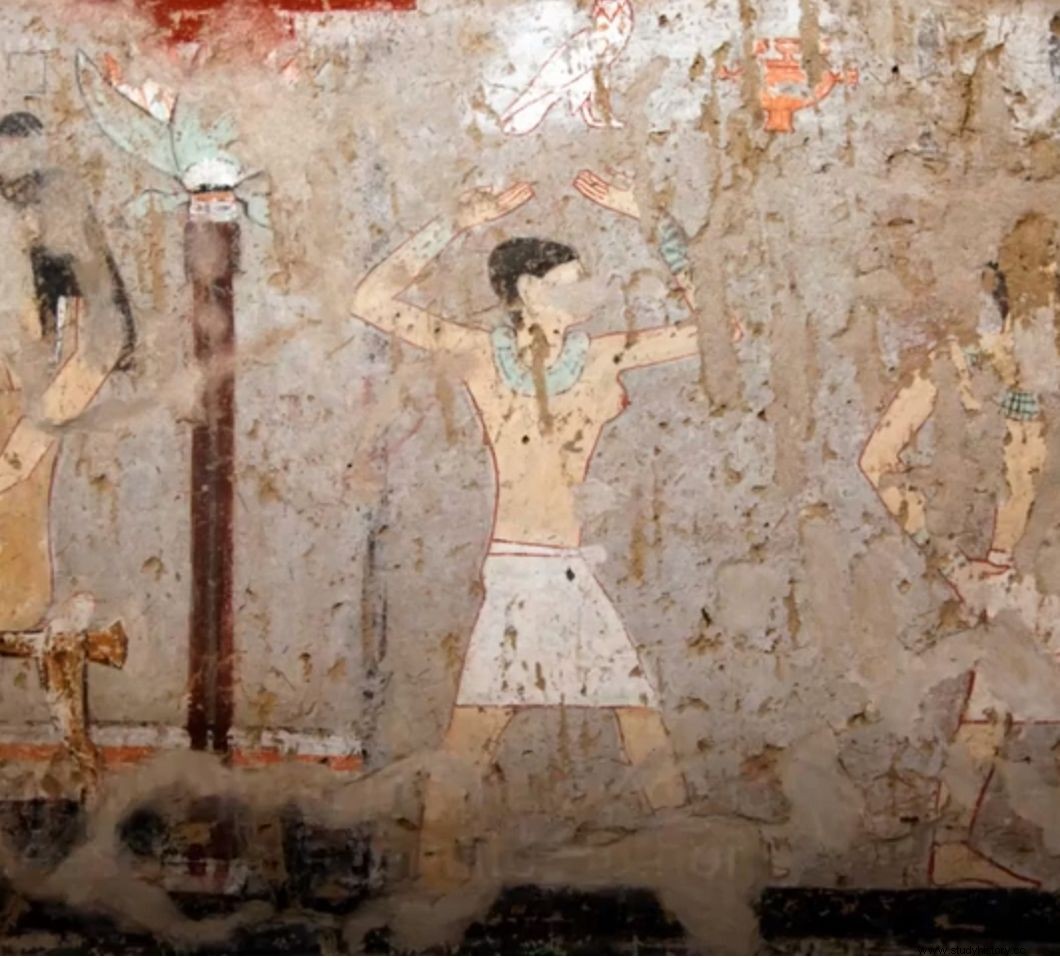Noble Lady of the V th Egyptian dynasty (between -2500 and -2300), Hetpet is a priestess of Hathor, goddess of fertility. She is buried among the notables of her time, near the pyramids of Giza.
Priestess of Hathor

Hetpet's name has been known to us since 1909; excavations carried out near the pyramids of Giza, not far from Cairo in Egypt, had unearthed antiquities and blocks of stone bearing his name. In February 2018, a team of Egyptian archaeologists announced that they had discovered and excavated his tomb, in a cemetery containing the tombs of high dignitaries of the V e Egyptian dynasty.
A high-ranking lady, Hetpet lives in ancient Egypt around – 2400, during a period of peace, wealth, cultural and artistic development. The monumental pyramids are then gradually abandoned to make way for constructions of more modest dimensions. The pharaohs erected palaces and temples, in particular solar temples dedicated to the god Re. Hetpet is a priestess of Hathor.
Hathor, goddess of fertility
Among the most popular goddesses of Egypt, Hathor is a goddess of fertility, love, motherhood, festivities, beauty, music and joy. She is represented in the form of a cow, or a woman carrying a solar disk between her horns. Helping women give birth, Hathor is revered by the pharaoh's family as well as the people.
Temples and chapels are dedicated to him along the Nile Valley, in Apis, in Kôm Abou Billou, in Heliopolis, in Memphis, in Philae, but also in Nubia, in Sinai, in Israel. Throughout the year, many festivals are celebrated in his name. The third month of the Nilotic calendar, based on the flooding of the Nile, bears his name:Athyr, or Hathyr. Between November and January, a festival celebrates the return of the goddess who returns with the flood.
The tomb of a priestess
Hetpet's tomb reveals architecture and decorations specific to its time. Its entrance leads to an L-shaped room, containing a purification pool on which are engraved the name and titles of the priestess.
The tomb also unveiled well-preserved wall paintings and rare scenes. Hetpet is represented there in hunting and fishing scenes. Other paintings show bare-breasted dancers or women and men working in leather and metal. Other unusual depictions show domesticated monkeys picking fruit, holding a basket, or dancing in front of an orchestra.
Excavations carried out in the area could lead to new discoveries.
Useful links
Egypt:the ancient tomb of a priestess discovered
